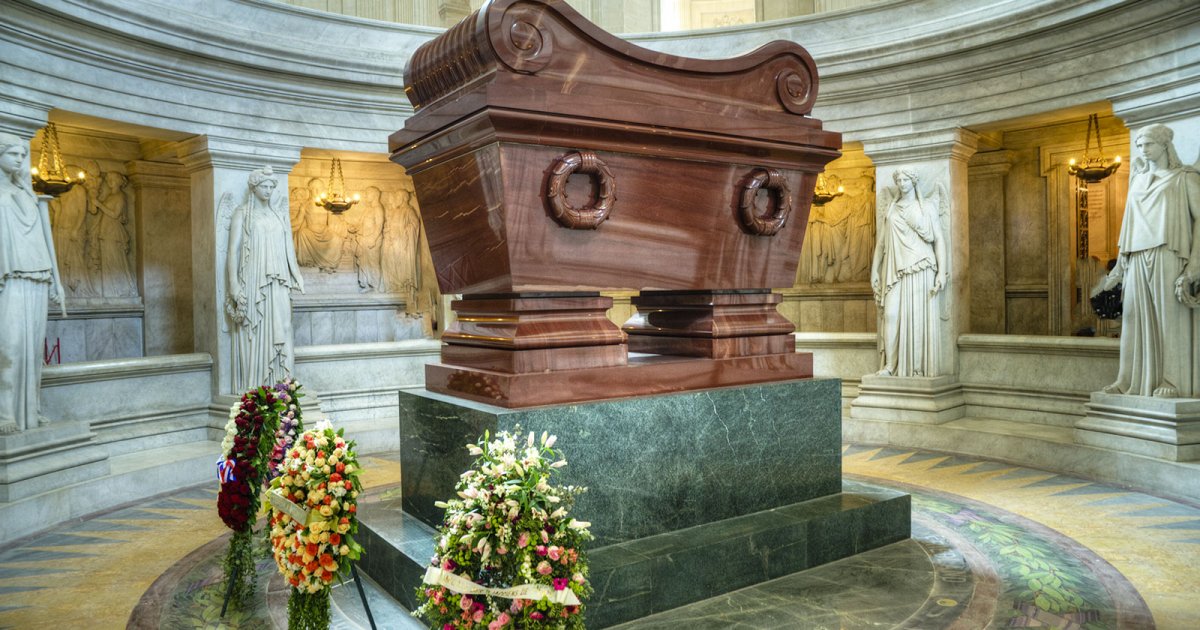INVALIDES, Napoleon's Tomb
 Language: English / USA
Language: English / USA
The great church of Saint-Louis des Invalides is also part of the Invalides complex; it's also known as the "Soldiers chapel". You can see it at the back of the court of honor, similar to a monastery. Its interior has an austere style as well, with pillars and an upper gallery. Notice the flags that hang on top: they are the emblems of regiments that were taken from enemies during wars, but they all date to after Napoleon, because the previous ones were burned after the defeat of Waterloo to prevent them from going back into enemy hands as trophies. More than 400 soldiers are buried in the crypt, and are those who stood out for the most valiant actions.
Behind the main altar at the back of the church, a stained glass window divides the church from the domed chapel called Dôme des Invalides: a true Baroque masterpiece that was designed as a building exclusively for the king and the court.
You'll certainly have noticed its clear resemblance to the dome decorated by Michelangelo at St. Peter's in Rome: its golden covering weighs an impressive twenty-five pounds. You can quickly cross the chapel's interior and go down to the circular crypt and Napoleon Bonaparte's tomb. It is a simple but impressive sarcophagus in red porphyry from Finland. But you're probably asking yourself, didn't Napoleon die in exile on the distant island of Saint Helena? Of course, but you should know that in 1840, nineteen years after his death, the British government returned his remains to the French government. The transport of his remains from Africa and the burial under the dome of Les Invalides were very emotional events for the rediscovered national pride. You can see the tombs of his two brothers Joseph and Jérôme next to his, as well as the most famous commanders of his armies.
FUN FACT: Napoleon's ashes are in an iron case, but just like in the Egyptian pharaohs' tombs, this case is in turn enclosed in an acacia wood coffin, two lead ones, an ebony one, and finally an oak one.
And with this we have finished our tour of the Les Invalides complex in Paris. MyWoWo thanks you for staying with us, and will see you at the next Wonder of the World!



